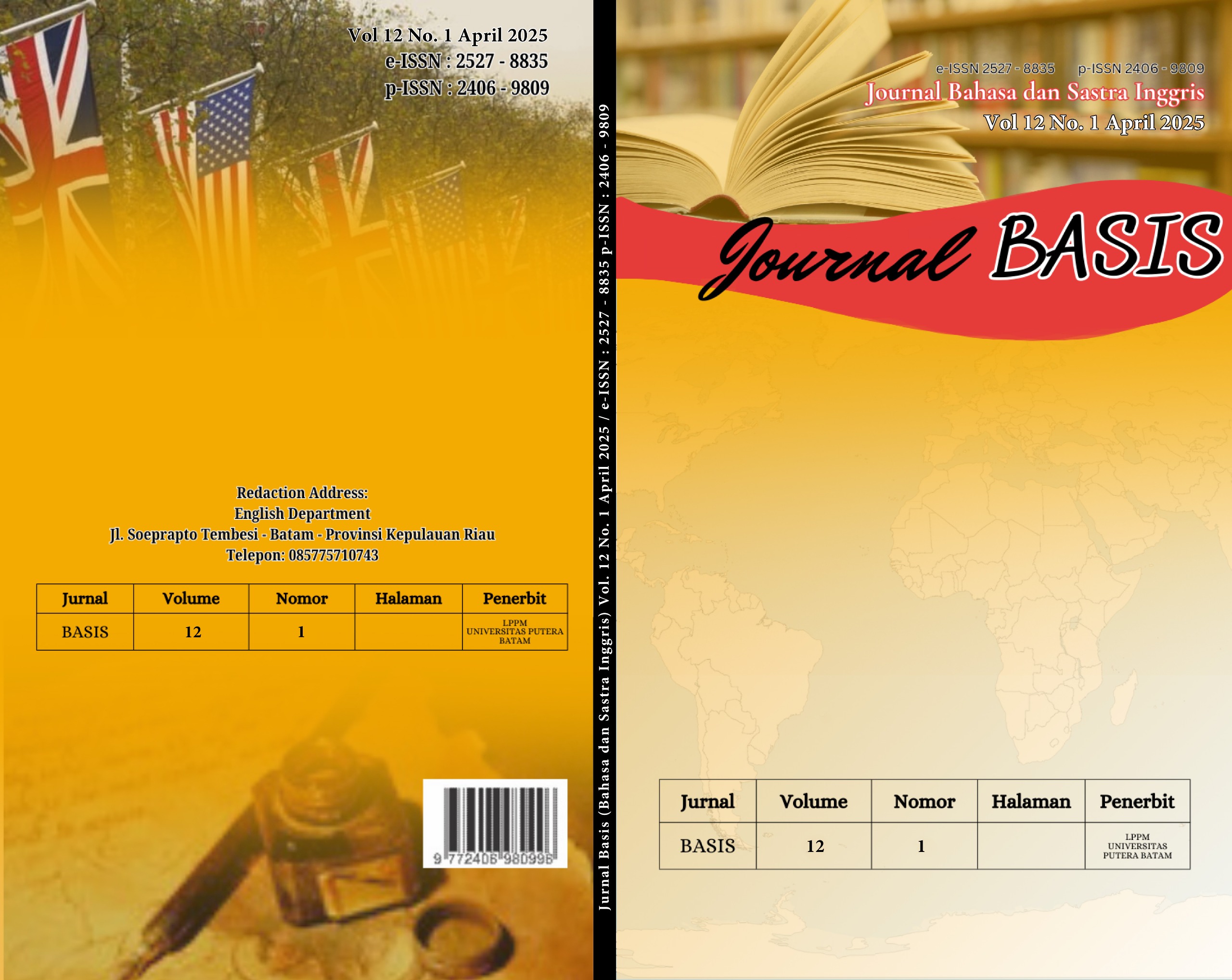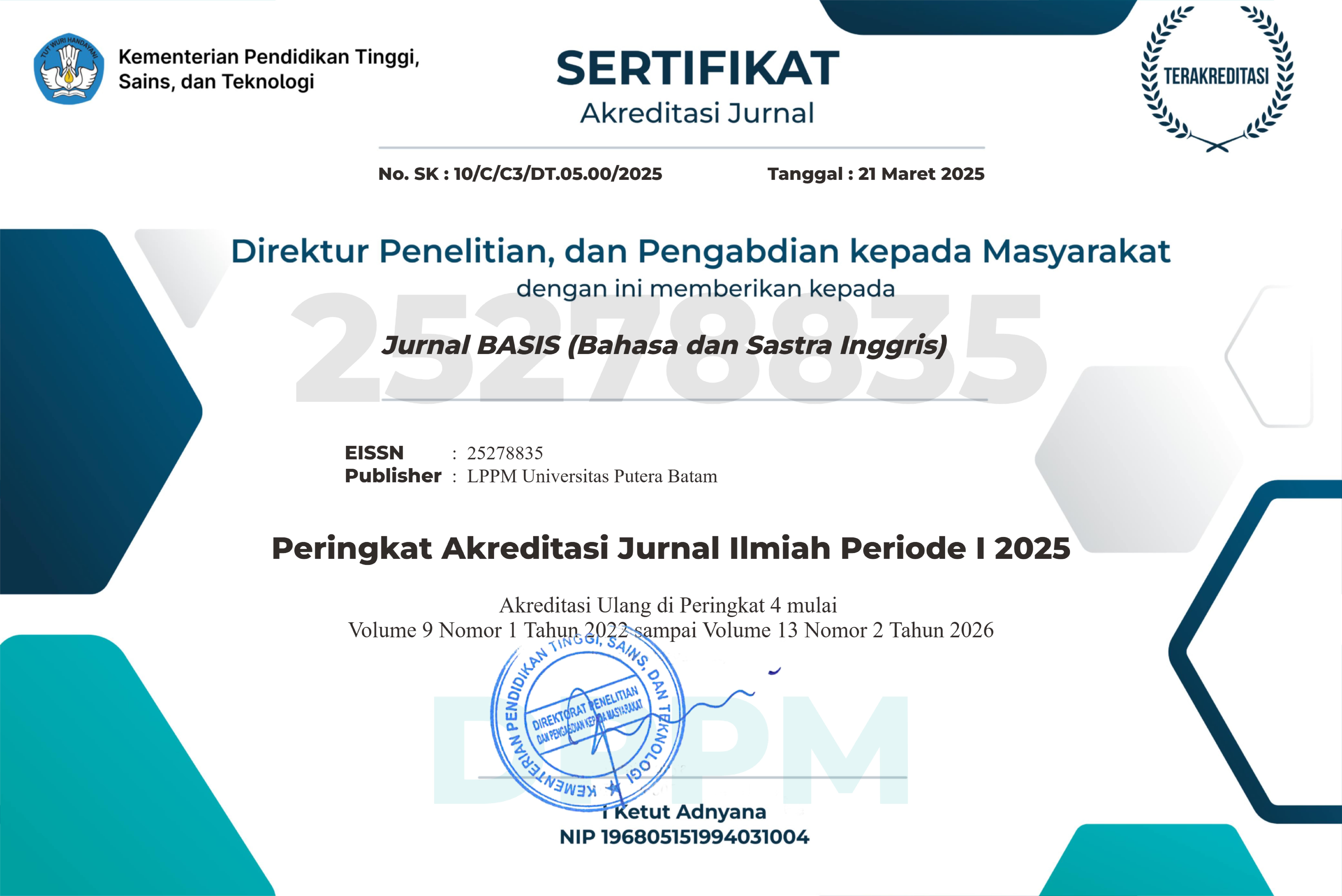NAVIGATING VICTORIAN CITY SPACE: ARTIFICIALITY IN AUSTEN’S NORTHANGER ABBEY AND GASKELL’S NORTH AND SOUTH
DOI:
https://doi.org/10.33884/basisupb.v12i1.9286Keywords:
Artificiality, City Space, Victorian Era, Social Alienation, Comparative AnalysisAbstract
Abstract
This research investigates the themes of artificiality and social alienation in Jane Austen's Northanger Abbey and Elizabeth Gaskell's North and South, examining how urban settings in Bath and Milton encapsulate the social complexities of Victorian society during the Industrial Revolution. Employing a comparative literary analysis, grounded in urban and social theory as articulated by experts such as Simmel and Parkins, this study highlights how city spaces both reflect and reinforce societal constraints and individual behaviours. Data was gathered through close readings of the primary texts, supported by secondary sources, and analysed to explore patterns of social interaction and urban influence on character development. The findings reveal how Bath’s societal superficiality shapes Catherine Morland’s experience, while Milton’s industrial harshness impacts characters like Margaret Hale and Mr. Thornton, illustrating the varied ways urban settings foster artificiality and exacerbate social divides. This research contributes to understanding Victorian literature's critique of societal structures, emphasizing the value of authenticity and human connection amid social pressures.
References
Austen, Jane, Northanger Abbey, Lady Susan, The Watson, and Sandition (Oxford: Oxford University Press, 2008).
Elizabeth Gaskell: North and South (London: Penguin Classics,2012)
Adams, J. E. (2012). A history of Victorian literature (Vol. 10). John Wiley & Sons.
Austen, J. (2008). Northanger Abbey. Macmillan.
Benis, T. R. (2015). The Neighborhoods of Northanger Abbey. The Eighteenth Century, 56(2), 179–192. doi:10.1353/ECY.2015.0014
Byrne, P. (2004). The Unmeaning Luxuries of Bath: Urban Pleasures in Jane Austen’s World. Persuasions: The Jane Austen Journal, 26, 13–26. https://jasna.org/publications-2/persuasions/no26/byrne/
Choi, J. (2006). The Metropolis and Mental Life in the Novel. In History (Vol. 37, Issue 4). https://about.jstor.org/terms
Dennis, A. (2009). Mobile Narrative, Spatial Mediation, and Gaskell’s Urban Rustics in North and South. MHRA Working Papers in the Humanities, 4, 43–54.
Engels, F. (2009). Condition of the working class in England. Routledge.
Fleishman, A. (1974). The Socialization of Catherine Morland. Elh, 41(4), 649–667.
Gallagher, C. (1985). The industrial reformation of English fiction: social discourse and narrative form.
Gaskell, E. (1996). North and south. Penguin.
Jones, M. C. (2015). Fashioning Mobility: Navigating Space in Victorian Fiction. University of Kentucky.
Mazar, N., A. O., & A. D. (2008). The dishonesty of honest people: A theory of self-concept maintenance. Journal of Marketing Research, 45(6), 633–644. doi:10.1509/jmkr.45.6.633
Parkins, W. (2004). Women, mobility, and modernity in Elizabeth Gaskell’s North and South. Women’s Studies International Forum, 507–519. https://doi.org/10.1016/j.wsif.2004.09.006
Simmel, G. (2003). The metropolis and mental life. Social Theory Re-Wired, 2003 (Routledge), 438–445.
Simon, H. A. (2019). The Sciences of the Artificial (J. Laird, Ed.; 3rd ed.). MIT Press.
Wheeler, M. (2014). English fiction of the Victorian period.
Wynne, D. (2006). The Reenchantment of nineteenth-century fiction: Dickens, Thackeray, George Eliot and serialization.
Zemka, S. (2009). Brief encounters: Street scenes in Gaskell’s Manchester. ELH, 76(3), 793–819.













 JURNAL BASIS (BAHASA DAN SASTRA INGGRIS)
JURNAL BASIS (BAHASA DAN SASTRA INGGRIS)
